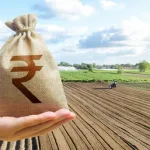Make no mistake about the pivotal role women and girls play in the sustainability of rural households and communities, in improving rural livelihoods and the overall wellbeing of the people. The good news is that this key role by women is gaining recognition. Needless to say that women form a large part of the agricultural labor force aside from carrying out unpaid care and domestic work within households in rural areas for the wellbeing of families.
Globally women in rural areas often do not get their due place or the window of opportunity to display their capabilities. On the contrary, importance is garnered by city and urban women in several walks of life such as education, employment, enterprising skills, entertainment and business.
In this context, the United Nations has established the International Day of Rural Women (IDRW) keeping in view that they could play a good hand in defending the world from hunger and poverty. According to the UN, achieving gender equality and empowering women is not only the right thing to do but is a critical ingredient in the fight against extreme poverty, hunger and malnutrition. On average, women make up more than 40% of the agricultural labor force in developing countries, going from 20% in Latin America to 50% or more in parts of Africa and Asia. Even then, they experience discrimination in land and property ownership, equal pay, participation in decision-making entities, and access to resources.
The UN asserts that if women are given the same opportunities, the agricultural produce can go up from 2.5 to 4% in the poorest regions and the number of malnourished people is likely to go down from 12 to 17%. The main idea behind the international day’s theme is “Rural women cultivating good food for all”. It is an attractive and appealing line and in fact a tribute to the hardwork and hardships to rural women for their unique contribution to economy. For the United Nations, there is a need to recognize the work of these heroines in the food systems of the world.
Additionally, by analyzing the invaluable contribution of rural women to development, the UN says that the key role women and girls play in ensuring the sustainability of rural households and communities, improving rural livelihoods and overall wellbeing, has been increasingly recognized. Women account for a substantial proportion of the agricultural labor force, including informal work. They make good contribution to agricultural production, food security and nutrition, land and natural resource management and building climate resilience.
Despite such a massive contribution, in rural areas women and girls suffer disproportionately from multi-dimensional poverty. While extreme poverty has declined globally, the world’s one billion people, who continue to live in unacceptable conditions of poverty, are heavily concentrated in rural areas. In most regions the poverty rates are higher than those in urban areas. Yet smallholder agriculture produces nearly 80% of food in Asia and sub-Saharan Africa and supports the livelihoods of some 2.5 billion people. Female farmers may be as productive and enterprising as their male counterparts but are less able to access land, credit, agricultural inputs, markets, and high-value agri-food chains and obtain lower prices for their crops.
The International Labour Organization (ILO) decent work agenda offers an integrated framework for rural women’s empowerment, underlined by international labor standards, social dialogue and the recognition that rural women play a key role in climate action. UN Women supports the leadership and participation of rural women in shaping laws, strategies, policies, and programmes on issues that affect their lives. Training equips them with the skills to seek new livelihoods and adapt technology to their needs.
True, 80% women in rural areas in the present times haves access to education and about 15 to 20% women are able to enlist themselves for various government jobs ranging from teaching, healthcare, and administration to politics. This is a healthy percentage from a realistic point of view. But the question is: can rural women get the status they deserve for their hardwork? I do not know.
Notably, rural people, both haves and have-nots, are displaying great concern for and placing significant importance on the education of girls. At the educational institutions (exceptions aside), the enrollment of girls outnumbers boys — an indication that educating girls arguably falls among the top priorities.
Not only this, rural girls do play a key role in various socio-economic spheres of life apart from contributing productively in agriculture/horticulture sectors. With reasonable road connectivity at play in rural areas, many women find it comfortable and fruitful to work with the help of pushcarts. This was not in view in the absence of roads.
Pertinently the rural women — who are not part of government sector — play a leading role in cultivating good food such as vegetables and fruit for the entire humanity. Though this noblest task by them largely winds up unrecognized, it is appreciable that these women are content in rendering the selfless service to their fellow beings.
The UN needs deserves appreciation for marking the IDRW because the day is significant on two counts: one, by observing it the contribution of rural women shall not stay in the background and thus lose its importance. Unless, the role of rural women is given prominence, the world is unlikely to recognize the significant role which they play in our life.
Two, by observing the day, the UN — comprising of about 190 sovereign countries—sends a right message across the globe that the contribution of rural women in global economy cannot be neglected and that we need to be heartily thankful to their vital support in our life.
(Author is a teacher and RK Columnist. Feedback: [email protected])





